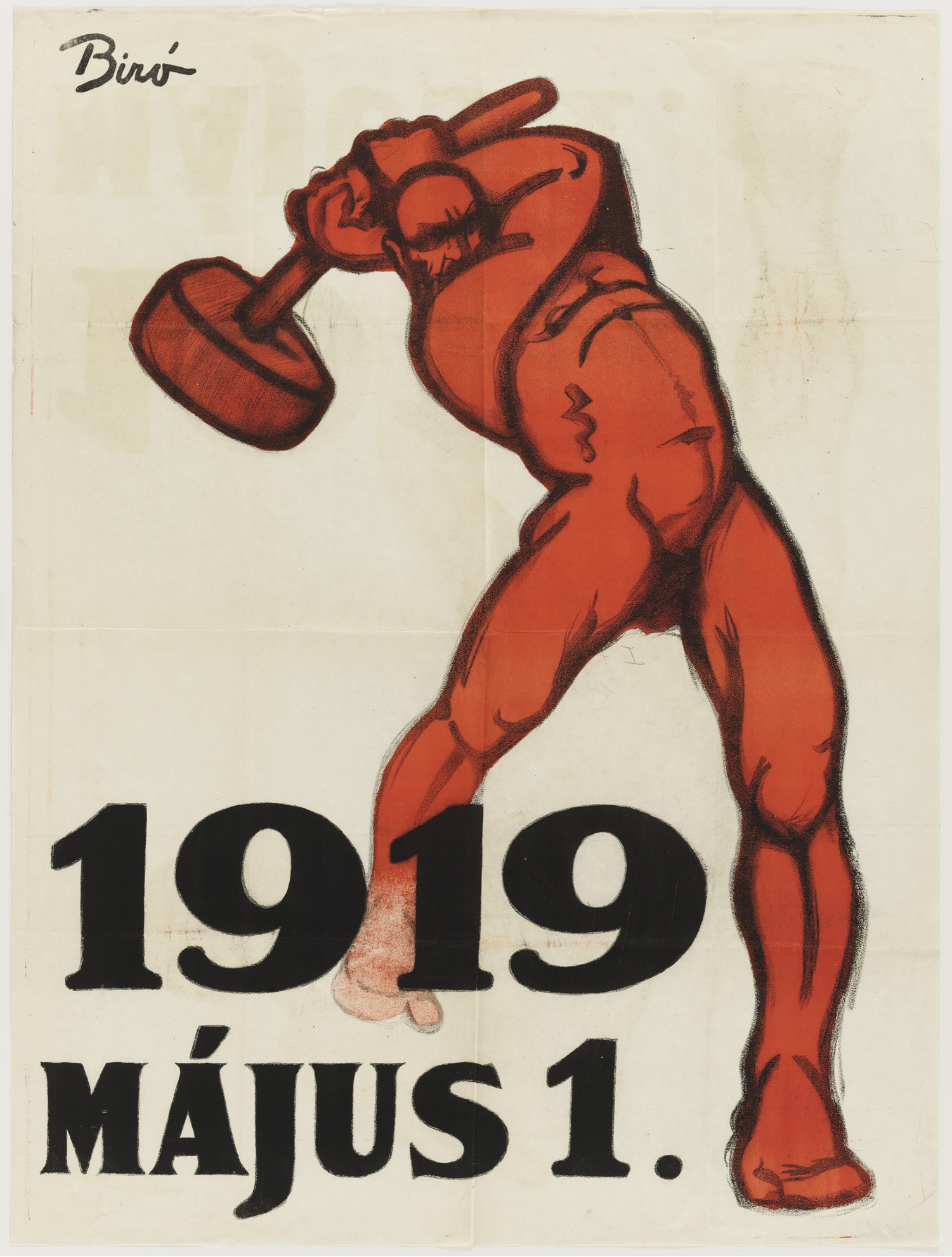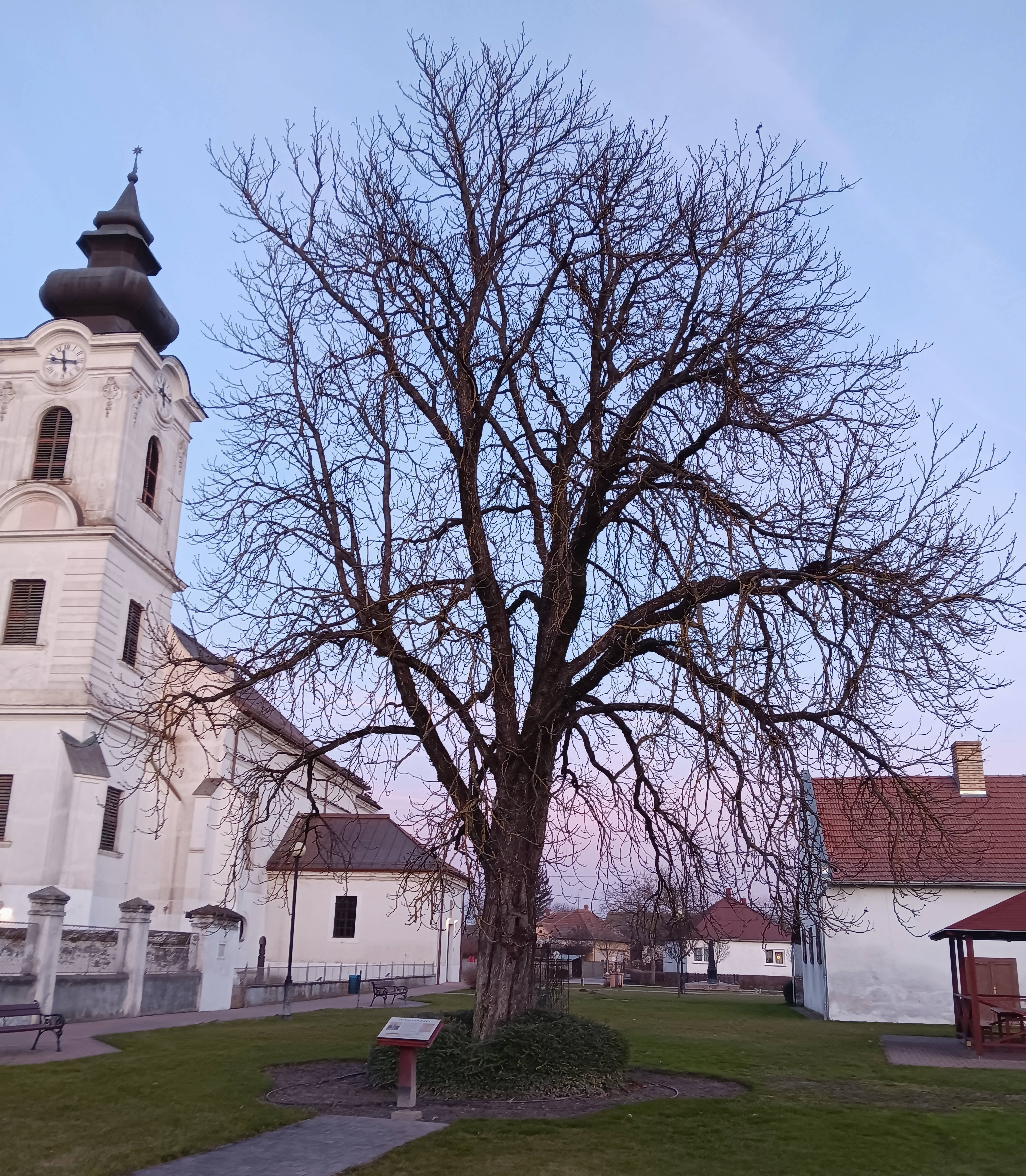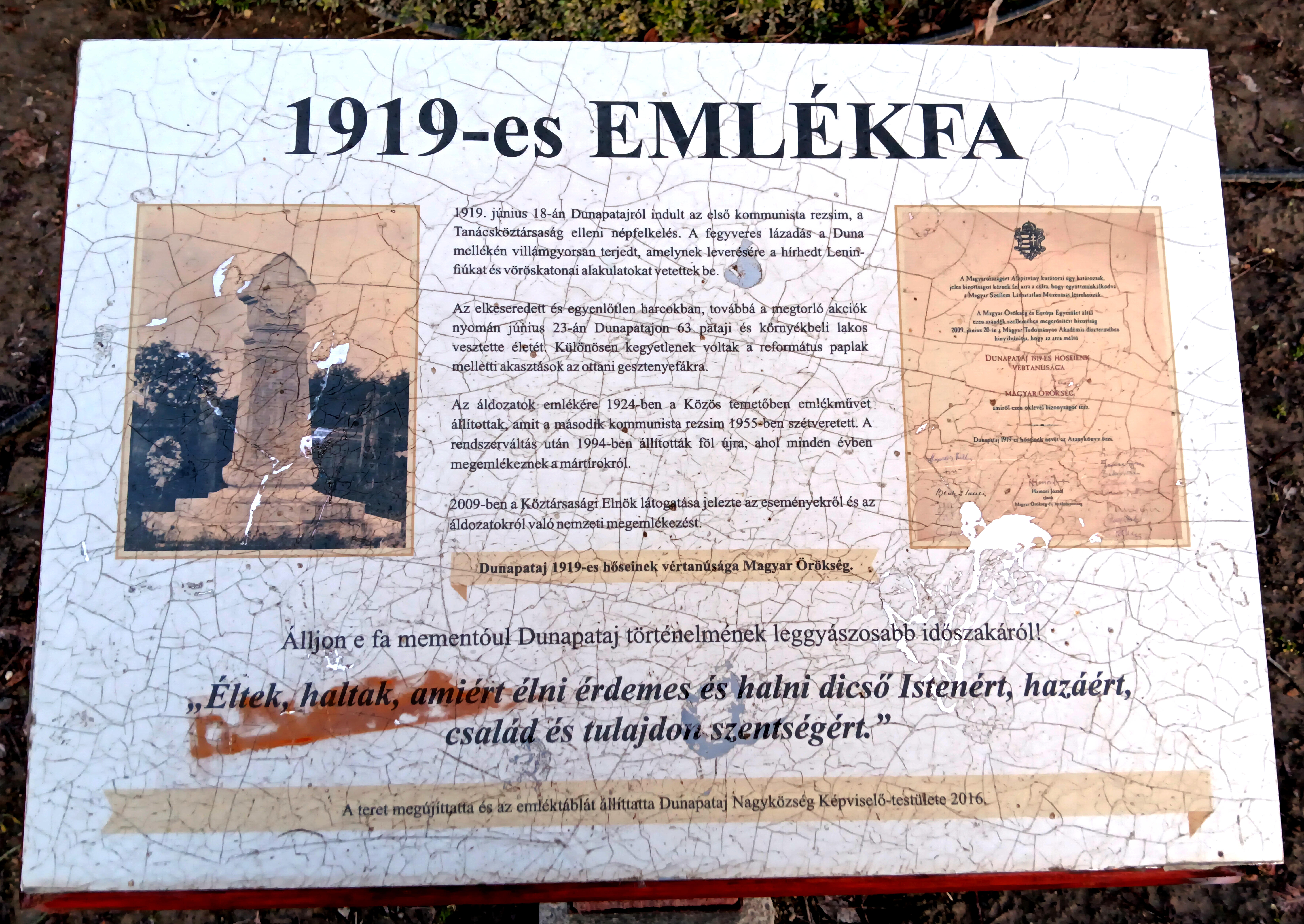The Project and My Methodology
Propaganda Out of Context is a project that came together in the fall of 2023 as a way to treat propaganda images as if they are art. As a guide, I tried to use techniques from art history to direct my analysis, which focused on artistic elements, not political messages. I am not an art historian, so it was a new and challenging process.

I chose to concentrate on a single example of propaganda, a poster created by Hungarian artist Mihály Biró dating back to 1919, which appears to the right. Its political message is in support of socialism, while its artistic style stems from avant-garde and Expressionist art that was popular in Europe at the beginning of the 20th century. Read about my discussion of the influence of Expressionist art on Mihály Biró elsewhere on this site, in particular, the Analysis and Interpretation section linked in the menu at the top of this page.
What I have not discussed so far on this site is the methodology that inspired how I analyzed Mihály Biró's propaganda piece. I used a material cultural analysis, which focuses on the material or physical aspects of objects. Historians, for instance, use this type of analysis when they consider the materials out of which an object was built, which can lead one's interpretation in interesting and unexpected directions. A good example of this from US history is in this podcast2 about a porcelan collection from China that George Washington purchased. The curator interviewed in the podcast uses the material aspects of the Washington family's porcelain to connect the family and the early United States to international trade and China, which is a side of US history that surprised me when I first listened to the podcast.
Once I had decided to build this project, I was curious what would happen if I treat propaganda objects, like Mihály Biró's poster, in the same way the curator in the podcast treated George Washington's porcelain. I asked myself what would happen if I focus on the material aspects of Biró's poster: for instance, artistic elements like how he organized his canvas or the emotions he may have wanted to communicate through the facial expression and posture of his subject. If I would have had the opportunity to see one of his posters in person, a copy of which is in a gallery in Budapest, I would have payed attention to details like the type of paper Biró used or if he painted it by hand or used a machine to print it.
Now, I am interested in continuing to analyze propaganda as material objects. Perhaps most intriguing to me is how to analyze digital propaganda as material culture. This approach might seem, on the face of it, impossible given that digital images are basically pixels on a screen or sound waves coming out of a speaker. However, there is a complex infrastructure that underlies those images and sounds. How does that infrastructure influence the way people create propaganda today? How do social networks influence the kinds of images and videos people create? How does the hardware that supports those networks and the software artists use to create audio-visual content limit or shape digital propaganda? I hope over the next few years to have interesting answers to these kinds of questions.
My Story and a Problematic History

I want to end this "About Page" on a personal note. On a recent trip to my father's hometown, Dunapataj, in Hungary, I learned about a tragedy that connects Mihály Biró, the government for which he created his propaganda, and my family. As I was walking around the town with an old family friend, she mentioned that 63 residents had been killed in 1919 by supporters of the Hungarian Soviet Republic. I had heard over the years that there was violence in Dunapataj during the revolution, but I had always assumed it was in reference to the 1956 revolution. After having spent the previous two months working on this project and delving into the history of the 1919 Hungarian Soviet government, learning that 63 people died during that government just a short walk from where my father grew up caught me off guard.
The tree in the photo on the right is part of a memorial to the dead. It sits in the town's Catholic church yard where, according to my friend, those victims were hanged on chestnut trees. She explained that residents decided to leave only that one tree as a reminder of what happened.
The photo and my translation in italics below are of the plaque that sits under the tree.

The 1919 memoral tree
On June 18, 1919, the first popular uprising against the communist regime, the Hungarian Soviet Republic, started in Dunapataj. The armed rebellion spread rapidly along the Danube, and the notorious Lenin boys and Red Army units were deployed to suppress it.
As a result of bitter fighting between unequal sides and subsequent retaliation on June 23rd, 63 residents of Dunapataj and the surrounding area lost their lives. Particularly cruel were the hangings of Reformed priests [that is, priests in the Reformed Church of Hungary] next to the chestnut trees.
A memorial to the victims was erected in 1924 in this shared cemetery [that is, a cemetary that all of the religious groups in Dunapataj shared], which the second communist regime took down in 1955. After that government ended, the memorial was re-erected in 1994 followed by a yearly commemoration of the martyrs.
In 2009, the visit of the President of the [Hungarian] Republic marked a national commemoration of the events and victims [of the 1919 uprising].
The 1919 Dunapataj martyrdom of the heroes of Hungarian heritage.
Let this tree stand as a reminder of the most mournful period in the history of Dunapataj!
"They lived, they died, in honor of glorious God, for whom it is worth living and dying, for the homeland, and the holiness of family and property."
This square was renewed and the memorial plaque erected by the Municipal Council of Dunapataj in 2016.
I will not go into detail here about all of the events mentioned by the plaque, even though I was extremely surprised that, according to it, the counterrevolution against the Hungarian Soviet Republic began in my father's hometown. Nonetheless, the main point I take from the plaque, as it relates to my family and this project, is that people in the area where my father grew up rose up in an armed rebellion against the government for which Mihály Biró created propaganda, including the poster that is this project's main subject. I do not remember any family history related to what happened in 1919 in Dunapataj, and my family friend mentioned that it is not clear why specifically the 63 had been killed. Some were under the age of 15, and some were elderly, which seem to be too young and old for armed revolutionary activity. Maybe some, or all, of the victims may just have been caught up in the chaos of that day.
I feel the urge now to investigate what happened in 1919 in Dunapataj and write a book about it. Another website like this one probably would not allow me to include enough detail to address what happened, even though the prospect of creating an interactive map is tempting. Nevertheless, I will end this "About Page" with a few final thoughts inspired by Mihály Biró and his poster. I do not feel ill will towards him. I believe the problems he criticized with his posters needed to be addressed, and I also appreciate his talent as an artist. I also cannot help, after learning about what happened in my father's hometown, asking myself why revolutionaries like Mihály Biró failed to maintain a Soviet government in Hungary, while Lenin and the Bolsheviks succeeded building the USSR. These final thoughts are worth thinking about further as I continue to improve this website and consider what my next related project will be.
1. Mihály Biró, Népszava: Magyarország népköztársaság, The Museum of Modern Art, retrieved November 29th, 2023, https://www.moma.org/collection/works/126205?artist_id=36589&page=1&sov_referrer=artist
2. “147. Setting the Table for the American Cincinnatus with R….” 2020. Conversations at the Washington Library. February 27, 2020. https://www.georgewashingtonpodcast.com/show/conversations/147-setting-the-table-for-the-american-cincinnatus-with-ron-fuchs/.
